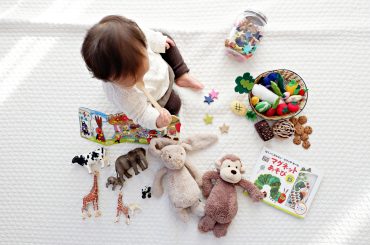While most parents know how to heat a baby bottle properly, others may need clarification about when or how to go from a heated bottle to cold milk. Many parents may be surprised to learn that there is no standard recommendation for when to finish warming up a baby bottle. This is why you should know at what age do you stop warming up baby bottles before feeding them.
Some parents start their babies on milk at room temperature or even chilly, while others prefer to warm the bottle. This is a personal preference. Is there any science behind this? Read the content for more details.
The following detail will save you time and energy when considering baby feeding.
Contents
Why babies need hot milk

Giving your baby a cold or room-temperature milk bottle has no risk. The essential thing is ensuring your kid gets the nourishment they need, and the health advantages are the same either way. And even if it’s not the baby’s favorite, they will learn to accept it, with some initial resistance.
No rule says the milk has to be warmed up, but doing so will offer your infant a reassuring boost. Giving your baby a warm bottle while holding them close is a beautiful way to make them feel safe and comfortable.
The reason behind hot milk bottle
Even though the hot formula has no nutritional or health benefits, some babies prefer it. Babies tend to like what they are used to, so if they have constantly been fed from warm bottles, they may need help learning to drink cold or at room temperature formula. Also, babies who are used to being breastfed (and drinking warm breast milk) might like their formula to be served warm as well.
Warm milk vs. Cold Milk

Giving warm or cold infant milk is more personal than public health. There is no difference in the nutritional value of breast milk, or baby formula served warm, cold, or at room temperature. Some parents discover that their babies like warmed milk or formula since it is warmer—and therefore closer to breast milk’s temperature—than the temperature of the human body.
Some parents prefer the ease of not having to reheat their babies’ bottles at all, and they discover that their infants are content to drink from a bottle that is either cold or at room temperature.
Detailed explanation about at what age do you stop warming up baby bottles
You should avoid rewarming the bottle during the first 6–7 months. Serve it at room temperature; after a few weeks, even serving it at refrigerator temperature is OK.
Take the step to move from a warm bottle to a cold baby bottle.
Here are some excellent reasons to switch from heat bottles to bottled milk or formula at a lower temperature. If you heat breast milk to a too-high temperature, some beneficial antibodies and other immunological elements that make it a healthy option might destroy. When breast milk or formula is heated in plastic baby bottles, chemicals may seep out of the plastic and into the milk. But it is safer to heat breast milk or formula in special baby bottles that don’t have BPA than in regular polycarbonate baby bottles.
Why you should switch to a cold/ room temperature milk bottle

It’s common to accidentally switch to giving your kids room-temperature water from a bottle instead of warming it up. The baby’s primary caretaker is likely to be very careful only to give the baby bottles that have been warmed. But a babysitter who monitors the child only infrequently could accidentally provide the baby with a bottle that is too cold or too warm.
When you’re too busy, a babysitter or grandmother often gives the baby a bottle of cold milk, either formula made with room-temperature milk or pumped breast milk from the refrigerator. If your baby is picky and only drinks warm milk, you can help her change by giving her gradually colder milk daily.
End Note:
Whether or not you reheat your baby’s bottle is usually a matter of choice more than a necessity. If you decide to reheat your breast milk or formula, you will want to ensure that you do it securely. This step includes avoiding overheating or putting it in the microwave. Additionally, it implies considering the temperature before giving it to your child.





